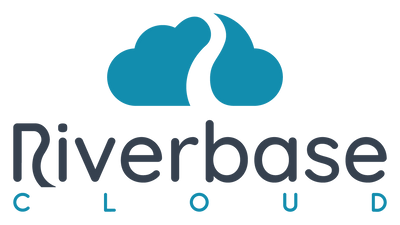Optimizing Your Daily Operations for Better Outcomes
Optimizing your daily operations can transform your business, making it more efficient and effective. Optimizing means to make something as good as possible, whether it’s reducing costs or improving productivity. Here’s a quick overview of the benefits:
- Improved Efficiency: Streamlining tasks saves time and money.
- Higher Productivity: Focused efforts yield better results.
- Cost Reduction: Eliminates waste and reduces expenses.
- Better Use of Resources: Maximizes the utility of existing assets.
Optimizing isn’t just about cutting costs. It’s about fine-tuning every aspect of your operations to achieve the best possible outcomes. By doing so, you can grow your business, improve customer satisfaction, and stay ahead of your competition.
I’m Gary Gilkison, and throughout my career, I’ve specialized in optimizing business processes. From IT management to sales and entrepreneurial ventures, I’ve always focused on refining strategies for better performance and efficiency.

Must-know optimizing terms:
- search engine optimization
- seo marketing
- seo visibility
Identify Key Processes for Optimization
Analyze Current Performance
To start optimizing your daily operations, you first need to analyze your current performance. This involves looking at key performance metrics and collecting data to understand where you stand. Let's break it down:
- Performance Metrics: Use tools like Google Analytics to track website traffic, bounce rates, and session durations. For business processes, focus on metrics such as cycle times, error rates, and throughput.
- Data Collection: Gather data from various sources, including employee feedback, customer reviews, and system logs. This will help you identify patterns and areas needing improvement.
- Bottlenecks: Look for steps in your processes that slow things down. These could be manual tasks, outdated technology, or inefficient workflows.

Set Clear Objectives
Once you've analyzed your current performance, it's time to set clear objectives. These objectives should be specific, measurable, and time-bound. Here's how to do it:
- Specific Goals: Identify what you want to achieve. For example, reducing the cycle time of order processing by 20%.
- Measurable Outcomes: Ensure that your goals are quantifiable. Use metrics like time saved, cost reduced, or customer satisfaction scores.
- Timelines: Set deadlines for achieving these goals. This helps keep everyone focused and accountable.
By focusing on a single process that needs immediate improvement, you can achieve quick wins and build momentum for more complex optimization activities. This approach not only shows immediate ROI but also gains company-wide buy-in for future projects.
Implementing Optimization Strategies
Streamline Workflow
Streamlining your workflow is essential for optimizing productivity and efficiency. Here’s how:
- Task Prioritization: Focus on what’s most important. Use tools like Trello or Asana to prioritize tasks and keep everyone on the same page.
- Automation Tools: Automate repetitive tasks to save time. Software like Zapier can connect different apps to automate workflows, reducing manual effort.
- Process Mapping: Create a visual map of your processes. This helps identify inefficiencies and areas for improvement. Tools like Lucidchart can assist in this.
By streamlining tasks, you not only save time but also reduce costs and improve overall productivity.
Improve Communication
Effective communication is key to a smooth workflow. Here’s how to improve it:
- Open Communication: Encourage open dialogue among team members. Use platforms like Slack for real-time communication.
- Feedback Loops: Create regular feedback loops to gather input from employees. This helps in identifying issues early and making necessary adjustments.
- Collaboration Tools: Use collaboration tools like Microsoft Teams to facilitate teamwork and document sharing.
Improving communication ensures everyone is on the same page, leading to better collaboration and quicker problem-solving.
Leverage Technology
Using the right technology can significantly boost your operational efficiency. Here’s how to leverage it:
- Existing Technology: Make the most of the technology you already have. Ensure it’s being used to its full potential and update any outdated systems.
- Software Solutions: Invest in software solutions custom to your needs. For example, Salesforce for customer relationship management or QuickBooks for accounting.
- Digital Tools: Incorporate digital tools to streamline operations. Tools like Google Workspace offer a suite of applications for document creation, storage, and collaboration.
By leveraging technology, you can automate processes, reduce errors, and save on operational costs.
Monitoring and Adjusting
Regular Reviews
Regular reviews are essential for continuous improvement. They help you track performance and make necessary adjustments.
Scheduled Assessments: Schedule regular assessments to evaluate your processes. Use tools like Google Analytics to track performance metrics and identify areas for improvement.
Performance Metrics: Measure key performance indicators (KPIs) such as productivity, efficiency, and cost savings. For instance, tracking time spent on tasks can highlight bottlenecks.
Adjustment Plans: Based on your assessments, create adjustment plans. These should outline specific changes to improve performance. For example, if a particular process is slow, consider automating it.
Feedback Integration: Collect feedback from employees during reviews. This helps in identifying issues that data alone might miss. Use platforms like SurveyMonkey to gather this feedback.
Regular reviews ensure that your optimization efforts are on track and that you can swiftly address any issues.
Employee Training
Training your employees is crucial for sustaining improvements and fostering a growth mindset.
Skill Development: Invest in skill development programs. Courses on platforms like Coursera can help employees learn new skills relevant to their roles.
Training Programs: Implement regular training programs to keep your team updated on the latest tools and techniques. For example, training on new software can improve efficiency.
Growth Mindset: Encourage a growth mindset among your employees. This means fostering an environment where learning and development are prioritized. Books like Mindset by Carol Dweck can be a great resource.
Feedback Loops: Create feedback loops to monitor the effectiveness of training programs. Ask employees for their input on what’s working and what’s not. Adjust the programs based on this feedback.
By focusing on employee training, you ensure that your team has the skills needed to adapt to changes and continue improving.
Frequently Asked Questions about Optimizing
What does optimizing something mean?
Optimizing means making something as good as possible. It involves adjusting processes or systems to achieve the best possible outcome. For example, in business, this could mean improving workflow to increase productivity. In technology, it might involve tweaking a computer program to run faster.
What is another word for optimizing?
Some synonyms for optimizing include enhancing, improving, and perfecting. These words all suggest making something better, but optimizing specifically focuses on making the best use of available resources.
Is it optimizing or optimising?
The difference between optimizing and optimising is a matter of regional spelling. In the United States, "optimizing" is the correct spelling. In the United Kingdom, "optimising" is used. Both mean the same thing, so use the spelling that fits your audience.
Conclusion
Optimizing your daily operations is crucial for achieving better outcomes and staying competitive in today's market. By focusing on key processes, setting clear objectives, and leveraging technology, you can significantly improve performance and efficiency.
At Riverbase Cloud, we specialize in helping businesses optimize their online presence. Our Power SEO Program is designed to ensure you achieve top 10 Google rankings, backed by our money-back guarantee. This means you can invest in our services with confidence, knowing that we are committed to delivering results.
Our approach combines years of expertise in SEO and a deep understanding of the digital landscape. From meticulous keyword research to optimizing your Google Business Profile, we cover all bases to ensure sustained growth and success.
Choose Riverbase Cloud as your partner in digital excellence. Let's transform your online presence and turn searches into sales with a strategy designed just for you. Together, we can achieve greatness.


